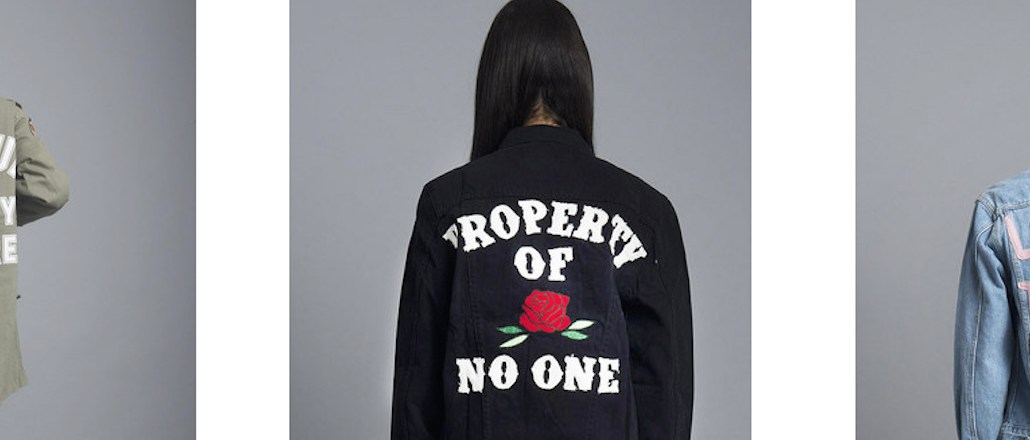
Nylon magazine’s e-commerce store is a retail embodiment of the publication’s cool-girl persona. Nylon Shop keeps around 3,000 products in store, selling a variety of underground designer names (including Brooklyn label Samantha Pleet and U.K. brand Lavish Alice) and a vast selection of graphic tees, sweatshirts and tanks.
Katherine Martinez, Nylon’s director of e-commerce, said that its best-selling items are the tagline T-shirts that riff on Internet culture. By turning of-the-minute online obsessions — pizza, Netflix, cats, for example — into cheeky streetwear, Nylon can spread the too-hip-to-care flair of its editorial side to a new business model.
“They’re memes, basically,” said Martinez of Nylon Shop’s graphic tees. Current popular items include shirts that read “Death Before Decaf,” “Less Whine More Wine” and “Seth Cohen Was My First Love.” Obsessing over coffee, wine and 2000s teen drama “The O.C.” will be familiar pastimes for any 20-something girl with a social media following.
Nylon, which was founded as a print magazine in 1999, opened its shop in 2012. Since then, the company has been building a content arm that encourages its Nylon readers to “immerse themselves in brands that matter to their lifestyle,” according to Nylon CEO Paul Greenberg. Nylon Shop’s revenue has grown 140 percent year over year, with traffic in 2015 increasing by 13 percent to date.
What ends up in Nylon’s Shop is closely tied to the company’s editorial direction. The e-commerce team works to recruit new brands to the site, but Nylon’s editors make recommendations and sometimes, buzzy content directly influences commerce.
Martinez said that the most successful shop item struck right after Zayn Malik announced in March that he would be leaving U.K. boy band One Direction. As Twitter fans freaked out over the news, Nylon’s three-person e-commerce team saw how much engagement the story was receiving on Nylon’s content side. So, a designer whipped up a graphic that read “In Memory of Zayn,” laid it over a tank top template and added it to the store. As the orders rolled on, Nylon Shop’s third-party printer made and shipped the shirts that day. It sold 54 units in the first hour, and the T shirt became the store’s best selling product to date.
Nylon’s e-commerce team posts products to its store that are in reaction to a piece of Internet news about three or four times a month, and Martinez said they’re always willing to try something to see if it catches on, like the Zayn shirt. It doesn’t always, she added, but it costs nothing to take the chance.
As other companies, like Thrillist, have tried and ultimately given up on building a successful commerce arm attached to its publication, Nylon Shop is powering on and offering an extra stream of revenue for the business. The publication is facing a rocky period: its editor-in-chief, Michelle Lee, recently left after less than a year to head up beauty magazine Allure’s editorial team; in October, 13 staff members were cut. According to an anonymous source speaking to Women’s Wear Daily, the print version of the magazine isn’t selling.
Nylon doesn’t break out revenue percentages from its store. Martinez said instead that since it began selling products in its e-commerce store, and linking out to its shop in articles, Nylon readers have become to expect seamless shoppability when navigating the site, both online and on mobile.

“We’ll post things from editorial to social media, and people will comment constantly ‘Where do I buy this?’ Our demographic is used to having that holistic experience — seeing a link and shopping it. It’s the experience she wants,” said Martinez.
But the remaining question is one that all content-and-commerce companies must answer: Why should someone shop a publication?
Geoff Cook, a partner at branding agency Base Design, said that if a publication can build a tight-knit community, its readers will want to soak up every part of its brand experience, including shopping in a store.
“Media companies are becoming brands that have a megaphone,” said Cook. “Nylon can sell through its editorial, by providing context that will help products resonate with its readership. If they’re successful, that can drive sales in a way traditional e-commerce cannot.”
Martinez said that as Nylon readers visit the sites more often, it can recommend products to shop based on articles they’ve read. However, she said that Nylon has learned that not all readers are shoppers, and vice versa. Approaching the two differently has paid off.
“We don’t want to overwhelm people with product,” she said. “I think targeting them wisely has set us apart — we don’t just see this as a money grab.”
Cook said that Nylon’s editorial power could help build the brand community needed to translate into clothing sales, but that its millennial audience is a tricky one to capture.
“They’re playing in a difficult space,” said Cook. “It’s crowded and it’s fickle — the challenge will be there for them to leverage their content.”
More in Marketing

Rembrand’s CEO wants to grow virtual ad placements in streaming, and he’s looking elsewhere for models
Omar Tawakol wants to improve advertising within the streaming world, and is working with advertisers and publishers to improve that experience.

Marketers are keen to use generative AI in ad campaigns, but hidden costs lurk
Marketers across the industry want to use AI to cut down on time spent in creative production. It’s not so simple in practice.

2025 was rough for Target. It could also be the year when its turnaround began
Much of the front half of the year for Target was defined by the company’s decision in January to pull back on DEI initiatives.





